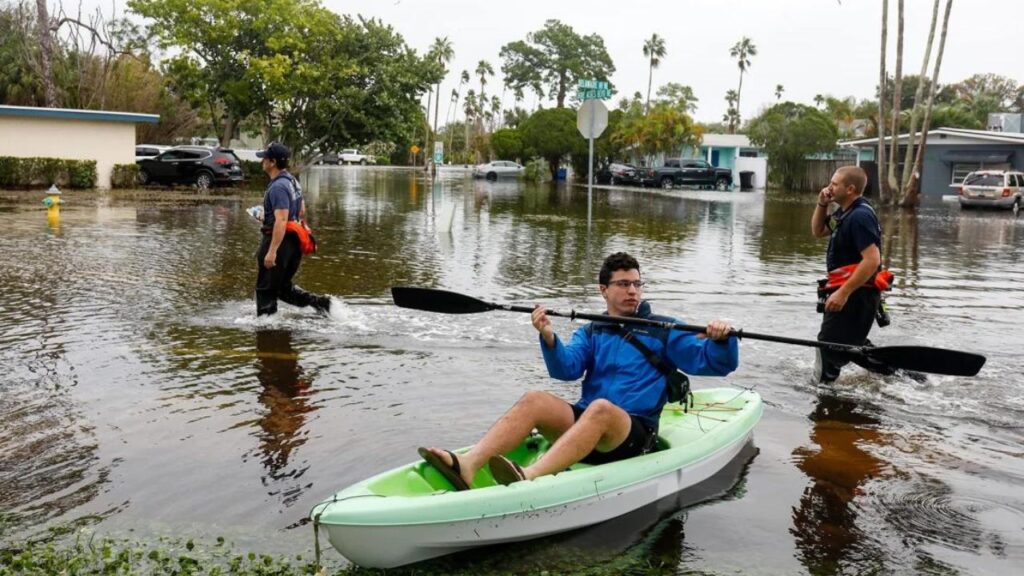Northeast Storm An intense storm has swept through the Northeast, leaving a trail of destruction, including power outages affecting over 800,000 people, water rescues, and travel disruptions. The storm, characterized by powerful winds and heavy rainfall, has impacted various states in the region, leading to concerns about flooding, flight cancellations, and potential snowmelt. This comprehensive report delves into the details of the storm’s impact, the ongoing situation, and the outlook for affected areas.
Power Outages and Wind Damage
Widespread wind gusts of 40 to 50 mph have resulted in power outages affecting more than 800,000 customers from Virginia to New England. Massachusetts and Maine, in particular, have reported over 270,000 outages, with the numbers expected to rise due to persistent gusty winds. The challenging conditions are hampering power restoration efforts, posing additional difficulties for residents and authorities.
Travel Disruptions
The storm’s powerful winds and heavy rain have disrupted travel across the region. More than 500 flights in the United States were canceled, and over 3,000 faced delays, according to FlightAware.com. Boston’s Logan International Airport experienced a ground stop due to wind, causing further travel complications. The storm’s impact on transportation extends beyond the skies, affecting roadways and leading to water rescues as drivers contend with flooded streets.

Water Rescues and Flooding
The storm’s intense rainfall, reaching nearly 6 inches, has led to significant flooding in New England. Water rescues have been reported, emphasizing the dangerous conditions on roadways. From Maryland to Massachusetts, widespread rainfall of 2 to 4 inches, and in some areas more, has caused water levels to rise rapidly, prompting concerns about the safety of commuters and residents.
In Danbury, Connecticut, “numerous roads” were flooded, necessitating the rescue of at least four individuals. Paterson, New Jersey, experienced a similar situation, with first responders working throughout the night and morning to rescue people trapped in flooded vehicles. Coastal areas are also grappling with storm surges, leading to coastal flooding alerts from Maryland to Maine.
Snowmelt and Flood Risk

In some New England states, the storm brings additional heavy rain on top of existing snowpack, raising the risk of rapid snowmelt. This dual impact could result in an increased flood risk, adding complexity to the ongoing challenges faced by residents and authorities.
Long-Term Impact and Outlook
As the storm starts to move away from the Northeast and heads into Canada, its effects will persist. Breezy conditions will continue across much of the region on Tuesday, and while rain will taper off Monday night, flooding may take time to recede. Some rivers are expected to crest on Wednesday, prolonging the threat of flooding.
A slight silver lining is the forecast for minimal snowfall accumulations in the interior Northeast on Monday night into early Tuesday. However, with the damage already inflicted, the focus remains on recovery efforts and addressing the aftermath of the storm.
Southeast Impact and Initial Storm Development
Prior to reaching the Northeast, the storm made its presence felt in the Southeast. Starting on Saturday, it traversed Florida, skirting the Southeast and mid-Atlantic coasts on Sunday. The region experienced powerful winds, record-breaking rainfall, and flash flooding, particularly in South Carolina’s eastern Georgetown County.
A flash flood emergency was declared in Georgetown County after nearly a foot of rain fell within a few hours. Reports of snapped power poles, tornado damage, and widespread flooding underscored the severity of the storm’s impact in the Southeast.
Conclusion
The Northeast Storm that has swept through the Northeast and impacted the Southeast has left a significant mark on the affected regions. The aftermath includes power outages, travel disruptions, water rescues, and concerns about ongoing flooding. As communities grapple with the immediate challenges, attention turns to recovery efforts, assessing the long-term impact, and fortifying infrastructure to mitigate the effects of future severe weather events
